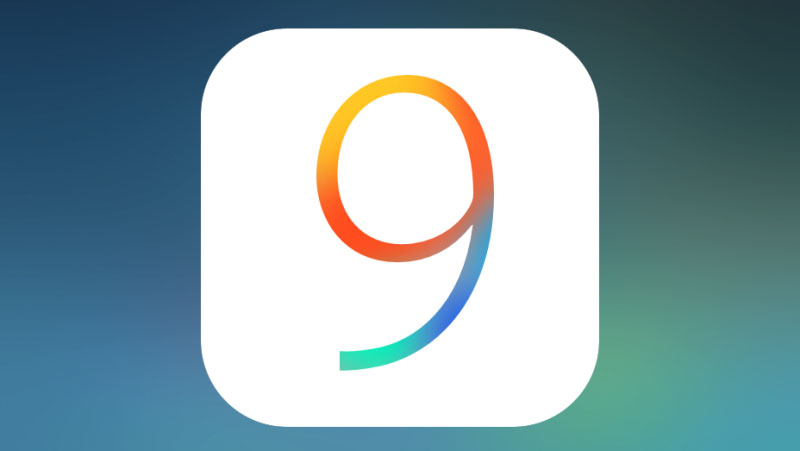App Search Optimisation 2.0 arrives with iOS 9

App Search Optimization 2.0 arrives with iOS 9
This article was written by Ed Chater, SVP Ad Tech at Somo.
The app developer world is about it change… again.
iOS 9 will release many new features, but one that I believe will have a large, long term impact on consumer behaviour is happening behind the scenes rather than during a flashy, onstage demo of a pretty-looking UI. Updates to search functionality for apps will change how users find content on their phones. Excitingly, it is possible to optimise for these changes to get app content found in new ways, ultimately extending discoverability.
The industry largely defines App Search Optimisation as methods and tactics to improve the ranking of an application within App Stores and regular search engines like Google. Up until now, this has been a very limited tactic, as developers and marketers have only ever been able to promote the app listing page – ASO 1.0. This is because previously there was no method for search engines to gain access to the content of the app. However, Apple, Google and some independents like Branch.io, Deeplink.me and other deeplinking start ups are now actively indexing app content rather than just the app store listing page, hence the advent of ASO 2.0.
Now, once indexes are created, new ways to promote the content of apps will follow, thus driving more engagement, more conversions and making apps function more like the web does. This is a win for the whole ecosystem. Developers experience an increase in app usage. OS providers get more app revenue as well as potentially creating new revenue lines. End users get easier access to the rich content of the apps they’ve downloaded. Indeed we are almost at a point where a user essentially creates a curated web on their device by downloading the apps and services they want and then being able to find the content they need from this curated list of services. This is a change from relying on Google to always curate which publisher has the best content.
So, what specifically is changing?
Let’s start with Apple.
Apple is now indexing app screens that will be suggested as results when users are searching in Spotlight, Siri, or the address bar of Safari. We already have a sneak preview of the associated usefulness from the existing Apple apps like mail and calendar that currently are served when using these services. Expanding this to all apps (assuming they are optimised) will make finding information super easy. The search functionality in Safari will further dent Google’s search market share as Apple will serve results before a user hits Google or Bing for their search result.
Apple’s changes have very cleverly considered the personalised nature of mobile by creating a store of results which sits only locally on a user’s device. This keeps personal data on the device and not transmitted up to a big bad cloud while ensuring massive relevancy as its hyper personalised. Apple has combined this local index with a public cloud index that stores publicly available results and takes into account signals being made across the ecosystem.
Crucially, the cloud index provides methods to submit app content so the user can be served an app result without having the content app on their device. The net result is when users search they will see results for the apps they have downloaded and apps they haven’t. This creates a huge opportunity for anyone looking to promote their app. Suddenly ASO isn’t a nice have – it’s essential to not get left behind.
Google won in web search because it gave more relevant results than any other search engine. Apple will need to do the same in order to be successful and truly change user behaviour. They haven’t given away all the levers in how they will rank results but it looks like a combination of on-app factors (keywords, descriptions etc…) combined with user behaviour patterns to help increase relevance. Apple has multiple indexes for different content types as well as the local and cloud stores. This presents a lot of complexity. In earnest until iOS9 is out in the wild and ASOers have had time to test and learn we won’t know what has the biggest influence. For early pioneers there will be significant gains to be made.
Now let’s look at Google.
This is obviously a huge threat for Google. While Apple Search will only ever work for iOS apps, this is where the highest value users are and most focus on app distribution is made. To be listed on Apple Search is free. The potential lost search market share if Spotlight becomes the most used search engine could be compounded with a reduction in Google Ad dollars if marketers can get results with Apple Search for free. Indeed it will be interesting to see how Facebook responds, who would also lose marketing dollars if Apple Search is successful.
Google is not slow to ensure it’s building out its own indexes to improve app search. It has the edge on Apple given it’s been presenting App results for a while on its own search products. Google Now, for example, has been working with select publishers to start serving relevant content within the Google Now app. This, plus Google’s install results, gives the company huge data on search behaviour and how to optimise relevancy. Now that Google is going deeper by building out its own app content indexes and starting to present this content on the results pages, it will be interesting to see if Google can win out on pure relevance. On Android, Google is doing as per Apple and baking the result into the OS. For Apple devices, Google is facing probably its biggest ever threat in its search dominance.
A key difference between Apple and Google is that to rank on Google you need to have a corresponding webpage which your app deeplink can be associated to. For most multi-channel operators this shouldn’t be too much of a problem but for mobile first companies, especially games, developers will need to think very carefully about creating web version of key screens if they want to get ranked by Google. Apple doesn’t require the same link to a website to rank but does offer a method to submit web versions of app content in order to better rank when a user doesn’t have your app implemented. Given the biggest upside with deeplinks is going to be promotion of deeplinks that help to drive new or lapsed users, ensuring you appear whenever a search is made against a core keyword is essential. If you don’t your competitors will steal the traffic.
What about Facebook?
It’s important to note that Facebook has its own index too. Facebook launched its index in April last year and to date has been focused more on giving developers tools to build deeplinks in their app which then allow promotion to Facebook audiences. I strongly suspect this is just the start and Facebook will be pushing new content discovery tools for apps to try and compete with the user land grab thats about to take place between Apple and Google.
Finally, independent deeplinking solutions are also building up indexes. These companies typically offer deeplinking coding tools for developers that allow them to start to crawl app content. While they are disadvantaged compared to the OS owners, there is still an opportunity to serve up more relevant results. App content search is a new frontier and given the amount of VC cash companies like Branch.IO have raised I wouldn’t bet against them releasing consumer products that take significant market share. After all, Google beat early web search engines like Yahoo who had complete dominance by out innovating. History could repeat itself with a search start up taking out the dominate player. Its a big ask but apps is a whole new frontier for relevancy.
How can marketers and developers take advantage?
Get Indexed
Submit your app content to the relevant indexes as a starting point. The easiest wins will be in the early days of this new world order so getting indexed early is key.
Optimize
Look at the different needs of the different indexes. Google and Apple are different so you can’t just optimize for one and assume you’ll be okay. Work with ASO specialists like Somo and get your web SEO teams to look at this very seriously.
Measure
Watch organic installs in your analytics closely. Start to deploy monitoring tools like MobileDevHQ from Tune and other ASO dashboards. In the early days we expect data from Spotlight search will be limited but don’t let that stop you. Use organic trend analysis to help estimate early gains.
This is a very exciting time for the mobile development community. We now have significant new ways to get apps installed and crucially used. Remember there are 3 search engines you need to be optimizing for: app stores, OS search engines (e.g. spotlight search) and your traditional search engines (Google/Bing).
It’s a whole new world. Ignore at your peril!
–
For more on iOS 9 features and changes, download Somo’s Handbook for Marketers.
Ed Chater, SVP Ad Tech, Somo








